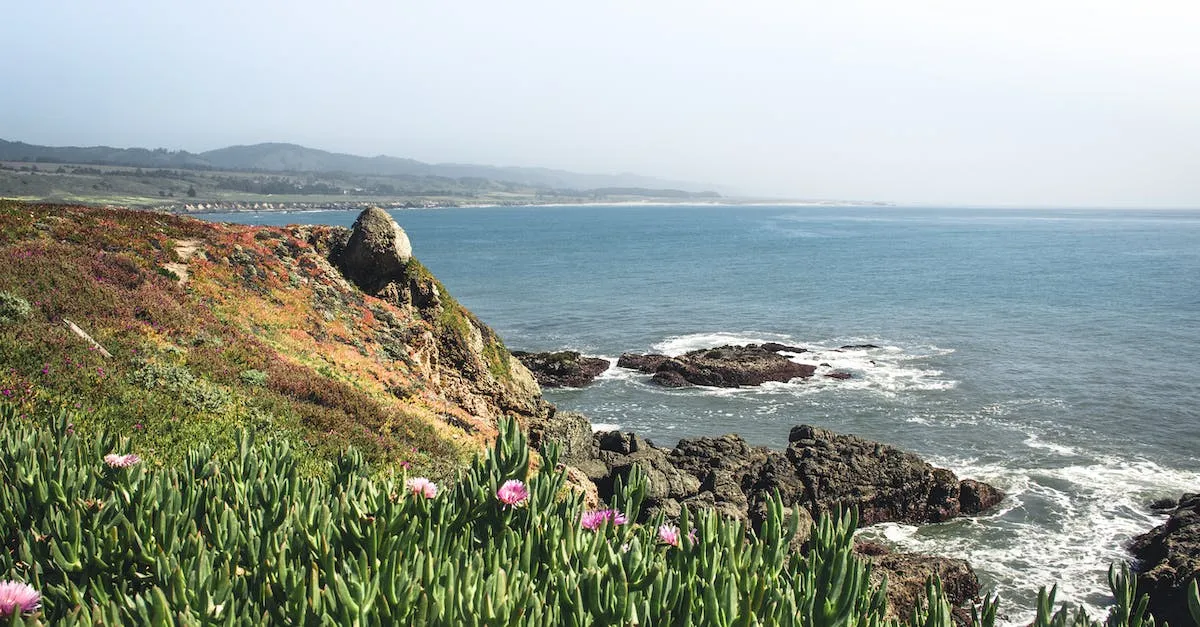Will California Become An Island?
The question of whether California will become an island has fascinated people for centuries. From myths to movies, this geographical curiosity continues to capture our imagination.
If you’re short on time, here’s a quick answer to your question: It’s extremely unlikely that California will ever actually separate from the rest of North America and become an island.
In this article, we’ll explore the origins of the California island myth, look at some of the historical maps that depicted California as an island, examine the geological forces that could potentially make it happen, and consider the implications if it did.
The Origins of the California Island Myth
For centuries, there has been a persistent myth that California, the sunny state on the West Coast of the United States, could potentially become an island. This intriguing idea has captured the imagination of many, but where did it originate?
Let’s delve into the fascinating origins of the California island myth.
Early European Explorers Thought It Was an Island
The notion of California being an island can be traced back to the early European explorers who first set foot on the shores of the region. In the 16th and 17th centuries, Spanish explorers like Juan Rodriguez Cabrillo and Sebastian Vizcaino believed that California was a separate landmass surrounded by water.
These explorers, relying on limited geographical knowledge and inaccurate maps, mistakenly identified California as an island.
The belief in California’s insularity was further fueled by reports from sailors who claimed to have circumnavigated the landmass. These accounts, although unreliable, added to the growing belief that California was indeed an island.
The idea persisted for centuries, even as more accurate maps and scientific knowledge became available.
It wasn’t until the 18th century that explorations by Russian and British navigators, such as Vitus Bering and James Cook, began to challenge the notion of California as an island. These expeditions provided more accurate cartographic information, showing that California was, in fact, connected to the North American continent.
However, the myth of California as an island stubbornly persisted.
Fictional Depictions Helped Popularize the Myth
The California island myth gained further traction through fictional depictions in literature and popular culture. In the 16th century, Spanish author Garci Rodríguez de Montalvo wrote a novel called “Las Sergas de Esplandián,” in which he described a mythical island named California.
This fictional island was said to be rich in gold and inhabited by fierce Amazon-like warrior women.
The popularity of Montalvo’s novel, along with subsequent works inspired by it, helped spread the myth of California as an island. As more European settlers arrived in the region during the 18th and 19th centuries, the idea of California being a separate landmass gained even more prominence.
Maps and atlases of the time often depicted California as an island, perpetuating the belief among the general public.
It wasn’t until the 19th century, with the advent of more accurate surveys and scientific exploration, that the myth finally began to fade. Yet, even today, the California island myth lingers in popular culture and continues to captivate the imagination of many.
While California is not an island, it remains a land of awe-inspiring beauty, diverse landscapes, and vibrant cities. Whether exploring the stunning coastline, hiking in the majestic mountains, or experiencing the cultural melting pot of cities like Los Angeles and San Francisco, there is no shortage of wonders to discover in the Golden State.
Historical Maps Showing California as an Island
Throughout history, there have been numerous maps that depict California as an island. These maps, created by 17th-century mapmakers, have sparked curiosity and debate among historians and cartographers.
Despite the fact that California is clearly connected to the mainland, these maps persisted for centuries, creating a fascinating misconception about the geography of the region.
The 17th Century Mapmakers Who Showed California as an Island
One of the earliest maps to showcase California as an island was created by the Dutch cartographer, Claes Janszoon Visscher, in 1650. His map, titled “Nova et Accuratissima Totius Americae Descriptio,” portrayed California as a separate entity from the rest of North America.
This depiction was largely based on accounts from explorers who believed they had discovered the mythical Strait of Anián, a passage that supposedly separated California from the mainland.
Other notable mapmakers, such as Nicolas Sanson and Joan Vinckeboons, also contributed to the California-as-an-island misconception. Their maps, created in the 17th century, further solidified the belief that California was indeed an island.
Why the Misconception Persisted for So Long
The misconception of California as an island persisted for centuries due to a combination of factors. Firstly, the early explorers’ accounts of a strait separating California from the mainland added credibility to the idea.
Additionally, the limited knowledge and understanding of geography during that time period allowed for the widespread acceptance of this misconception.
Furthermore, the myth of California being an island was perpetuated by the popularity of these maps among European cartographers. The maps were widely distributed and used as references by explorers, sailors, and traders.
As a result, the idea of California as an island became deeply ingrained in European minds.
It wasn’t until the 18th century that explorations by Russian and Spanish expeditions conclusively proved that California was, in fact, part of the North American continent. However, even with this evidence, the notion of California as an island continued to persist in some maps well into the 19th century.
Today, the historical maps depicting California as an island serve as a reminder of the complexities of cartography and the influence of cultural beliefs on geographic representation. They offer a fascinating glimpse into the past and highlight the ever-evolving nature of our understanding of the world.
Geological Forces That Could Potentially Separate California
California, known for its stunning coastline and diverse landscapes, is home to a complex network of geological forces that have shaped the state over millions of years. While the notion of California becoming an island may seem far-fetched, there are two significant factors that could potentially lead to its separation: the San Andreas Fault and rising sea levels due to climate change.
The San Andreas Fault and Plate Tectonics
The San Andreas Fault, a major geological boundary between the Pacific Plate and the North American Plate, runs through California for approximately 800 miles. This fault line is responsible for numerous earthquakes in the region and is a constant reminder of the dynamic nature of Earth’s crust.
Over time, the movement along the San Andreas Fault could potentially result in a separation of California from the rest of the continental United States. While this process would take millions of years, the gradual movement of the Pacific Plate northwestward along the fault line could eventually create a new coastline, effectively isolating California.
Rising Sea Levels Due to Climate Change
Another factor that could contribute to the potential separation of California is the rising sea levels caused by climate change. As global temperatures continue to rise, glaciers and polar ice caps are melting at an alarming rate, causing sea levels to rise worldwide.
California’s low-lying coastal regions, including cities like Los Angeles and San Francisco, are particularly vulnerable to the impacts of rising sea levels. If the sea levels continue to rise unchecked, it could result in the flooding of coastal areas and potentially erode the land connecting California to the mainland.
While the complete separation of California from the rest of the continent is unlikely to happen in the near future, understanding these geological forces and their potential impacts is crucial for policymakers and residents alike.
Taking measures to mitigate the effects of earthquakes and sea-level rise can help protect California’s unique landscape and ensure the safety of its communities.
Implications If California Did Become an Island
Economic Impacts
If California were to become an island, it would have significant economic implications for both the state and the United States as a whole. California is the fifth largest economy in the world, and its economy heavily relies on international trade.
The state is home to several major ports, including the Port of Los Angeles and the Port of Long Beach, which are key entry points for goods coming from Asia. Becoming an island would disrupt these trade routes and potentially lead to increased costs and delays in the transportation of goods.
Furthermore, California’s agriculture industry, which is one of the largest in the country, would also be greatly affected. The state is known for its vast agricultural lands and produces a significant portion of the nation’s fruits, vegetables, and nuts.
Without easy access to mainland markets, the agriculture industry would face challenges in distributing its products, potentially leading to decreased production and revenue.
In addition to trade and agriculture, California’s tourism industry, which generates billions of dollars annually, would also be impacted. The state attracts millions of tourists each year who come to experience its diverse landscapes, national parks, and iconic cities.
However, if California were to become an island, traveling to and from the state would become more complicated and expensive, potentially deterring tourists from visiting.
Changes to Trade and Transportation
The transformation of California into an island would require significant changes to its trade and transportation infrastructure. Currently, the state heavily relies on highways, railways, and airports for the transportation of goods and people.
If California were to become an island, new modes of transportation, such as ferries or underwater tunnels, would need to be developed to maintain connectivity with the mainland.
Furthermore, the state’s trade relationships would also need to be reevaluated. California has strong trade ties with countries like China, Japan, and Mexico. If the state were to become an island, new trade agreements and logistics systems would need to be established to ensure the flow of goods and maintain economic stability.
Effect on Ecology and Environment
The transformation of California into an island would have profound implications for its ecology and environment. The state is known for its diverse ecosystems, including its coastal areas, forests, and deserts.
Becoming an island would isolate these ecosystems and potentially disrupt their delicate balance.
Additionally, rising sea levels and the increased risk of natural disasters, such as hurricanes and tsunamis, would pose a significant threat to the state. California is already prone to earthquakes, and becoming an island would further increase its vulnerability to these natural disasters.
The state would also face challenges in managing its water resources. Currently, California relies on a complex system of aqueducts to transport water from the Sierra Nevada Mountains to the more arid regions of the state.
If California were to become an island, new methods of water supply and management would need to be implemented to ensure the availability of water for its residents and agriculture industry.
Conclusion
While the fanciful notion of California breaking off into an island makes for good fiction, the geological forces required make it practically impossible. Still, the myth persists as an intriguing example of how early misconceptions can take on a life of their own. Even if it never comes true, the California island myth will likely continue to fire our imaginations for years to come.








